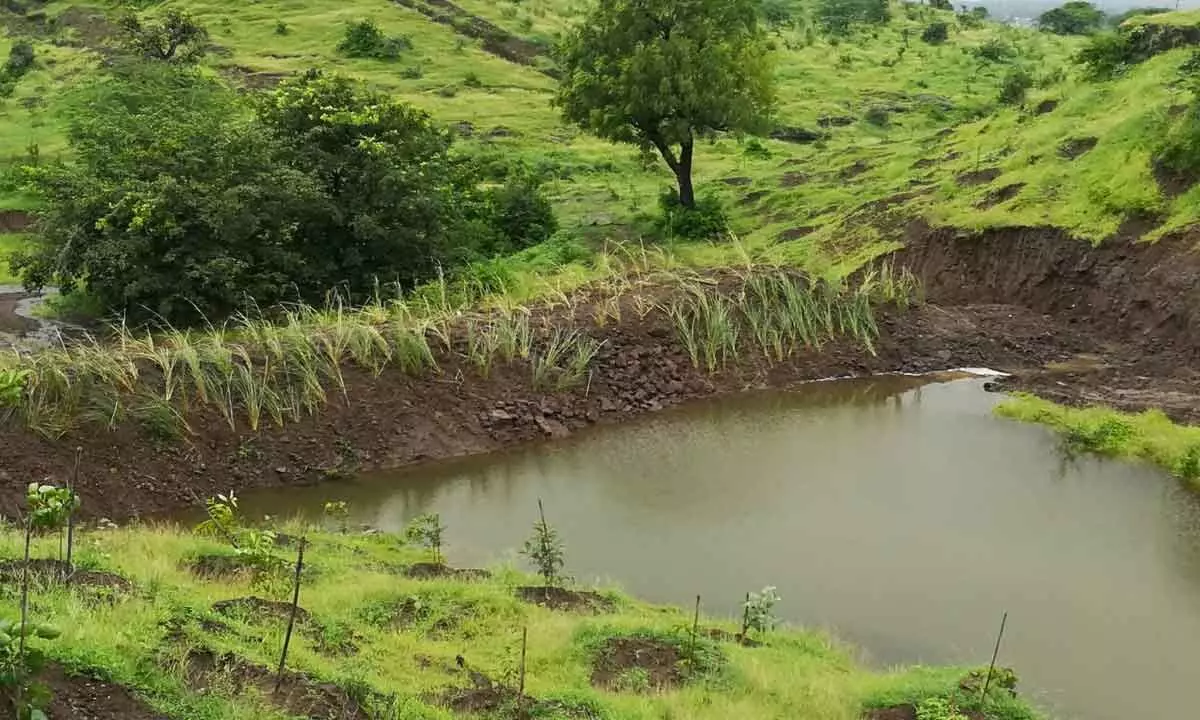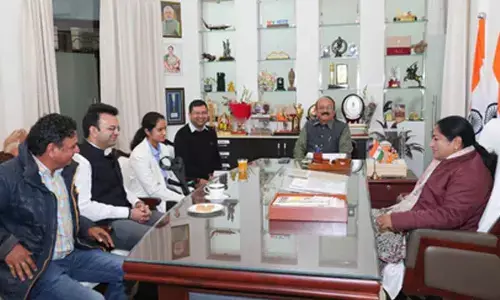Turn around India’s water story

Give local communities greater control over water structures for a secure future
India has some 2.4 million waterbodies, finds the country’s first census of all structures that hold rainwater and recharge groundwater. The census, conducted by the Union Ministry of Jal Shakti (water resources), has geo-tagged each waterbody — photographs and latitude and longitude of each pond, tank, check dam or reservoir has been collated.
The survey finds that 83 per cent of the waterbodies are being used for fisheries, irrigation, groundwater recharge and drinking water. It also reports that contrary to the commonly held perception, only 1.6 per cent of the enumerated waterbodies are encroached upon. There is no data about the state of the catchment area of the waterbodies, which would have helped determine how much of the groundwater is being recharged. But the fact is, this census is critical in these times of climate risk.
We know that rain will be more variable than ever before — our true finance minister, the Indian monsoon, is now more extreme and this means intense rainfall over fewer rainy days. So, we must hold every drop of water when it falls and where it falls. This is why this census must now be rigorously used to augment waterbodies; to rejuvenate the existing structures so that they can do more to hold the rain and to recharge the water for the longer drought season.
Each year, without fail we get caught in a vicious cycle of crippling and backbreaking drought and then devastating floods. But the fact is, this cycle is the new “normal” and it will have devastating impacts on river hydrology. Mitigating floods and droughts have only one answer — obsessive attention to building millions and millions of connected and living water structures that will capture rain, be a sponge for flood and storehouse for drought.
Our water future depends on our water wisdom. This we need to learn from the fascinating case of ancient Roma (Rome) and Edo (the city out of which grew Tokyo). Romans used to build huge aqueducts that ran for tens of kilometres to bring water to their settlements. These aqueducts even today are the most omnipresent symbols of that society’s water management.
Many experts have praised the Romans for the meticulousness with which they planned their water supply. But these aqueducts represent not the intelligence but the utter environmental mismanagement of the great Romans.
Rome was built on the river Tiber. The city did not need any aqueduct. But as the waste of Rome was discharged directly into the Tiber, the river was polluted and water had to be brought from long distances. Water outlets were few as a result and the elite appropriated these using a system of slaves.
On the contrary, traditional Japanese never discharged their waste into the rivers. Instead they composted the waste and used it in the fields. Using the rivers, Edo had numerous water outlets and much more egalitarian water supply.
The good news is that water literacy has grown. Over the past decades the country has learnt critical lessons on water management and has evolved a new paradigm.
Till the late 1980s, water management was largely confined to the issue of irrigation projects — building of dams and canals to store and supply water over long distances. But then came the big droughts of the late 1980s. It became clear that planning for water augmentation only through large projects was not enough.
This was also when the Centre for Science and Environment published its report, Dying Wisdom, which documented traditional technologies for rainwater harvesting in ecological diverse regions of India. The slogan was rain is decentralised, so is the demand for water. So, catch rain when and where it falls.
Today, there are a number of programmes designed to build and to rejuvenate waterbodies — the Mahatma Gandhi National Rural Employment Guarantee Scheme has invested in millions of waterbodies and now the government has announced Mission Amrit Sarovar under which 75 waterbodies in each district will be developed and rejuvenated as part of India’s 75 years of Independence.
In spite of this interest in decentralised water management, it is clear that we are not doing enough to secure our future. The problem lies in the fact that our land and water bureaucracies are fractured — some agency owns the pond, another the drain and yet another the catchment. Water security requires this to change. Giving the local community much greater control over the water structures — deepening democracy and devolution of powers — is then the answer to water management.
In all this, we must minimise our use of water — become more efficient with every drop. This requires us to do everything from investing in water-efficient irrigation and household appliances to changing diets, so that the crops we eat are water-prudent.
This is the opportunity — this decade we can put all we have learnt into practice and turn around the water story of India. It is possible. We just have to make it our single-biggest obsession. Water, remember, is about livelihood. It is about food and nutrition. It is about our future.
(Writer is Director General of CSE and editor of Down To Earth, an environmentalist who pushes for changes in policies, practices and mindsets; Courtesy: www.downtoearth.org.in)

















